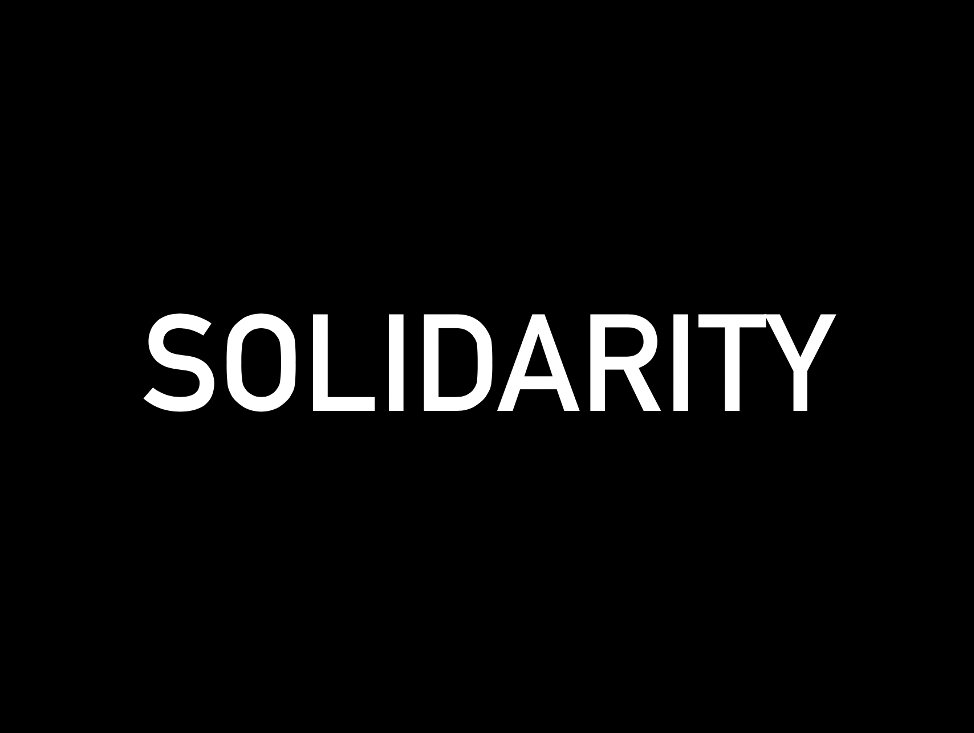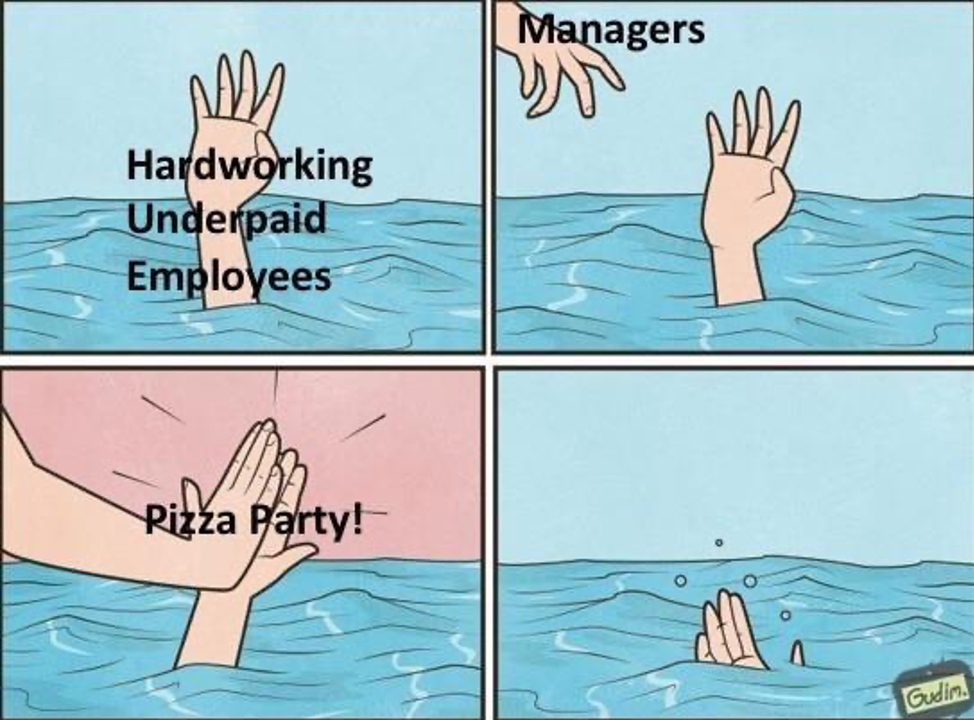COVID-19: Teaching Solidarity
Kit Hughes / Colorado State University

This column was supposed to be about life insurance. It was meant to be a short introduction to an early-stage project looking at how the life insurance industry used varied media to make life insurance meaningful to prospective dealers and their potential customers over the course of the 20th century. Analyzing my chosen film—a sleepy training film called “Human Life Values” produced by the Institute of Insurance Marketing, c1960s—relied on archival materials held by the Hagley Museum and Library in Delaware some 1,700 miles away. Given the nature of the research and questions of expense, I chose to hire an independent researcher to pull the records that interested me. On March 14th, she emailed me to let me know that the Hagley was closed due to COVID-19. As the evidence I hoped to use for my column is no longer available, I see two choices before me. Of course, I could still write about “Human Life Values,” offering a less-developed analysis. This would allow me to finish my series on “teaching” media as a vector of institutional power and governmentality. I think this is important work, and the question of how we quantify life has rarely had more currency than it does in the time of COVID-19.
My other option is to take this opportunity to think differently about my scholarly commitments. While I’ve enjoyed using this column to think about institutional pedagogies, the heart of my research agenda pursues questions about how work becomes meaningful and, in turn, how it structures our lives. My book examines 20th century private industry; the events above have made it impossible to ignore 21st century academia.
As Francis Eanes and Eleni Schirmer point out in a recent Jacobin article, academia was in crisis well before COVID-19 struck. Decades of public defunding have resulted in a wholesale turn to precarious working conditions for faculty, staff, and students as well as ballooning tuition costs and a concomitant student loan crisis. Faculty research is sold by private publishers at exorbitant rates, even to the very institutions that pay those researchers’ salaries. Anemic budgets at major granting institutions like the NIH invite private interests to fund and even at times shape academic research priorities. Athletics programs subsidize the billion-dollar profits of the NCAA almost exclusively at a loss to university budgets while student athletes receive no pay for sometimes life-threatening work.
We might think of this laundry list as a set of “higher education” problems. We should think of them as labor problems.
Who is “essential”?
The battle over determining what industries and job descriptions count as “essential” has revealed the extent to which our society is built on the backs of low-wage, taxing labor: people in the service sector, retail, logistics, cleaning, and delivery (not to mention childcare, K-12 teaching, nursing and elder care). However, the overdue recognition bestowed by the label “essential” is ultimately cruel—a means of legitimizing life-threatening demands that people report to work whatever their personal risk of infection. It has become yet another way to treat working-class members of our society, many of them women and people of color, as disposable.
In the university, the language of essential is also being used to describe certain types of research. Fortunately, this is being used to make sure that participants in human trials are not adversely harmed by disruption. Moving forward, however, we might reimagine our understanding of who and what is essential to research, and even what essential research looks like and does.
When I inventory those my own research relies on, the list is long: librarians, archivists, mentors, freelance researchers, graduate students, peer reviewers, journal editors, and the central office staff of several institutions. While I (like many) tried to use my book’s acknowledgements to signal the profound debt my work owes to these people, I’m embarrassed to admit that I’ve only recently understood the many I left out. The same “essential” employees who enable our basic survival also enable our work: mail carriers provide access to scholarly monographs (whether through ILL or private purchase) while facilities personnel ensure clean and healthy work environments.
This recognition is not, in and of itself, enough. Nor is gratitude. Maybe I’m a bit of a curmudgeon, but I’m tired of being thanked by bosses, trade magazine articles, and form letters sent by textbook presses and private learning management software companies. As I write in Television at Work, precarity and worsening working conditions are often accompanied by superficial praise and efforts to boost morale without changing material conditions.

Gratitude is literally useless. We can do nothing with it. Worse, it puts the receiver in a position to say “you’re welcome,” an implicit confirmation that things are ok and that any service given is freely rendered rather than coerced. We don’t need gratitude. What we need is solidarity.
If we think on a solidarity model, we can begin to truly reimagine what work looks like and how to make good on our ethical commitments to each other—from our immediate colleagues to the staff who sustain universities’ daily operation. Writing from within cultural studies, this mutual recognition and fight for justice is ultimately the point. However, I’ve been thinking too much about what the end product—the book, the article—can accomplish and too little about how the research process itself should be designed to meet these ends.
An example. The recent push towards “slow scholarship” speaks to academics’ recognition that the acceleration of work demands is unmanageable and unnecessary, feeding neoliberal emphases on market competition and easily quantifiable productivity. These concerns over employers’ control of employees’ time is not new. It is one of the chief emphases of the labor movement, expressed in the fight for the 8-hour day and its attendant slogan: “8 hours for work, 8 hours for rest, 8 hours for what we will.” This makes it an ideal locus of collective action.
Today, 40 hours is largely inaccessible, no matter where you get your check. For white collar workers (including faculty and graduate students), email and other connectivity technologies stretch the workday into the evening and weekends (a strategy, as I note in my book, pursued by employers with videotape some 40 years ago). Others (including many adjuncts) find themselves cobbling together two or more part-time jobs due to employers’ desires to avoid the cost of providing legally-mandated benefits for full-time employees. Not that 40 hours is the acme of work arrangements (we might ask whether it is reasonable to relinquish half of our waking time to an employer), however working hours is a potential rallying point across industries and job titles. Recognizing that everyone’s time is equally valuable—no matter how capitalist systems of pay suggest the opposite—is a means to securing more humane working conditions for all.
Human life values redefined
Solidarity enables us to recognize our shared positionality as wage laborers (whatever white/blue/pink collar distinctions attempt to divide us) as well as the debt we owe those who help make the world we inhabit (mail carriers, facilities workers, childcare and eldercare workers, not to mention student athletes, science R&D researchers, and the many others invoked above). Solidarity would ask us to respond to the crises before us (both COVID-19 and the pre-existing troubles in academia) by committing to aiding all of those who are essential to our research (which turns out to be, well, everyone)—both in its basic undertaking and, for those of us who claim cultural studies as home, in its political commitments.
While the latter part of this equation will be as diverse as researcher interest allows, the former demands collective action along a number of avenues, for example:
- The fight for a living wage, both for TAs and contingent faculty, as well as the many others this crisis has declared ‘essential’ to our leisure and work worlds.
- Disarticulating healthcare from employment. We are human beings who exist outside of work, and work should not define our access to health.
- Refusing to acquire research materials from companies like Amazon that disregard worker health and safety.
- Lowering productivity expectations as part of the fight to reclaim personal time. The path to this in the academy is especially murky. One of the locations of this acceleration is in graduate school where faculty, myself included, coach students to perform at an early assistant prof level out of (what at least feels like) compassion and a desire to see them succeed on a tight market. Working against increased productivity demands would require rethinking the organization of graduate education on a system level.
- Returning to the matter of time, fighting for paid medical and parental leave, as well as paid vacation—again, for all workers.
- Working across job titles, across institutions, and with students to ensure that the response to the budgetary crises exacerbated by COVID-19 equitably balances everyone’s livelihoods (with emphasis on the term’s invocation of work, health, and survival). There is no way forward that doesn’t start with restoring public funding for education to pre-austerity levels. The false scarcity established by current tax codes and the consumer model of education are twin poisons that rely on dividing theses groups to stave off structural change.
I completed my graduate education at the University of Wisconsin-Madison and now teach at Colorado State. Both universities are land grants, a public commitment invoked most eloquently by the Wisconsin Idea: “the boundaries of the university are the boundaries of the state.” Reconsidering our debt to our communities demands a better understanding of how labor—paid and unpaid—unites us. Many of the things that cultural studies and television studies are devoted to—understanding identity, power, culture; pushing for inclusion, for pleasure, for information, for justice—cannot be realized if we don’t also pursue working class politics.
Nothing I’ve written here is particularly original. It won’t count toward my research profile. And maybe we don’t need more COVID reflection pieces. But, as any student of ideology knows, repetition naturalizes. Workers of the world, unite.
Image Credits:
- Solidarity (author’s graphic)
- Author Note: If I had known about this Pizza Party version of Gudim’s “Drowning High Five” meme before the book went to press, I wouldn’t have had to write Chapter 5…
This is all we want.